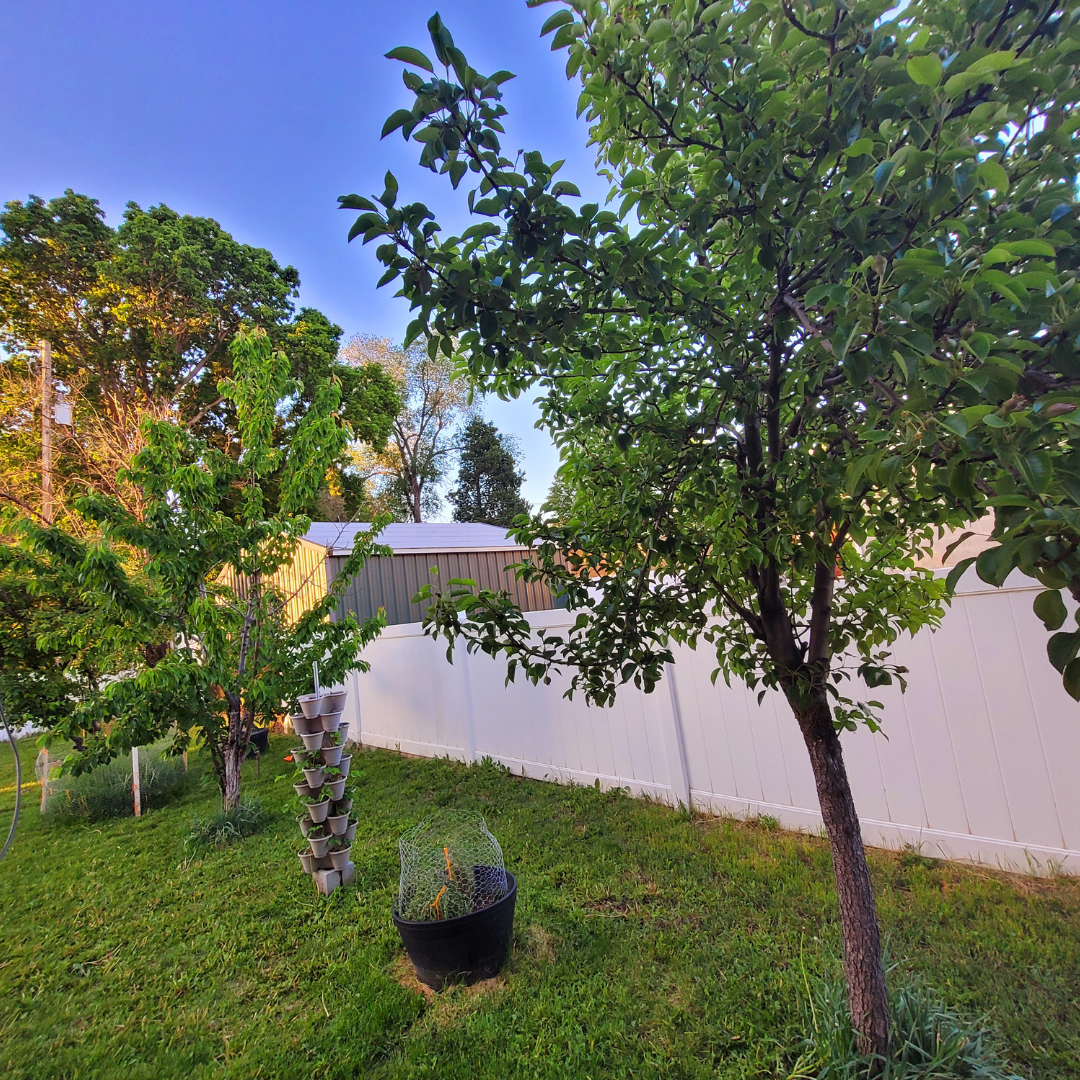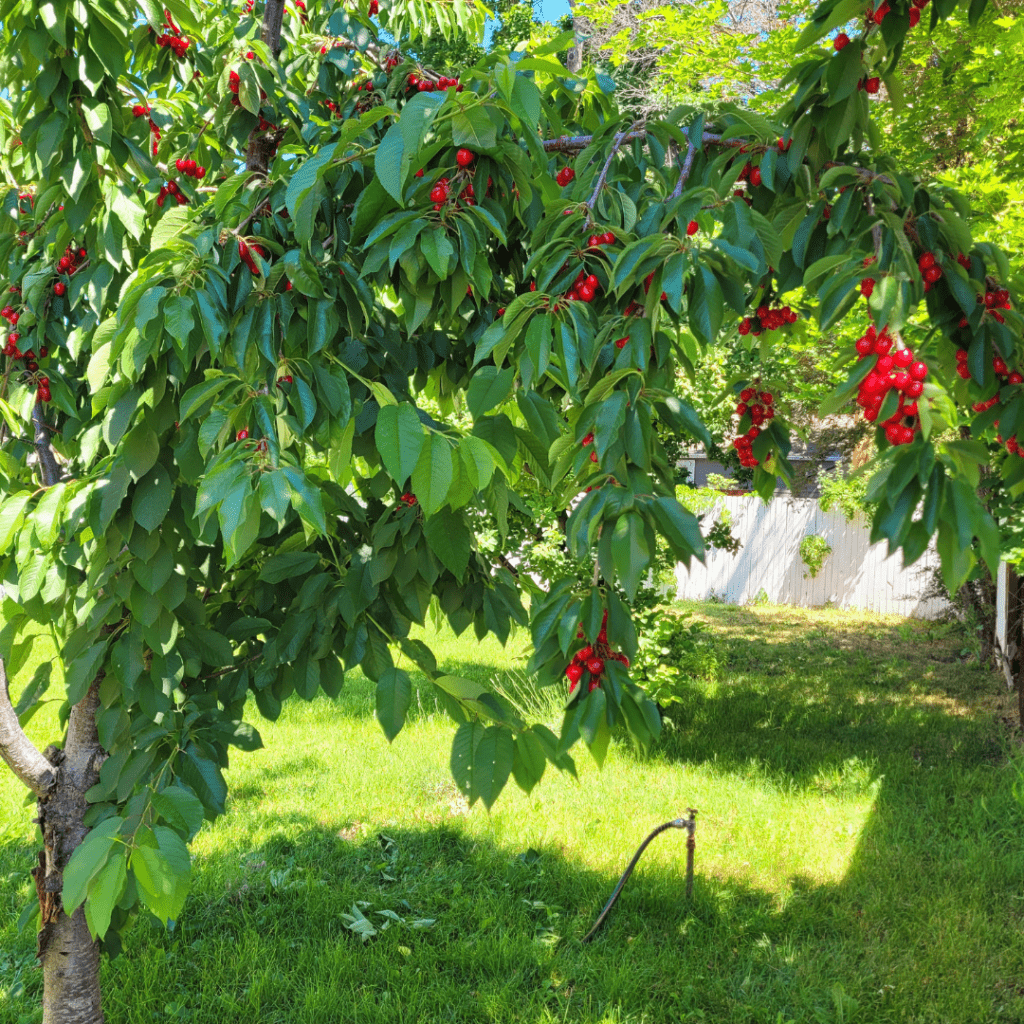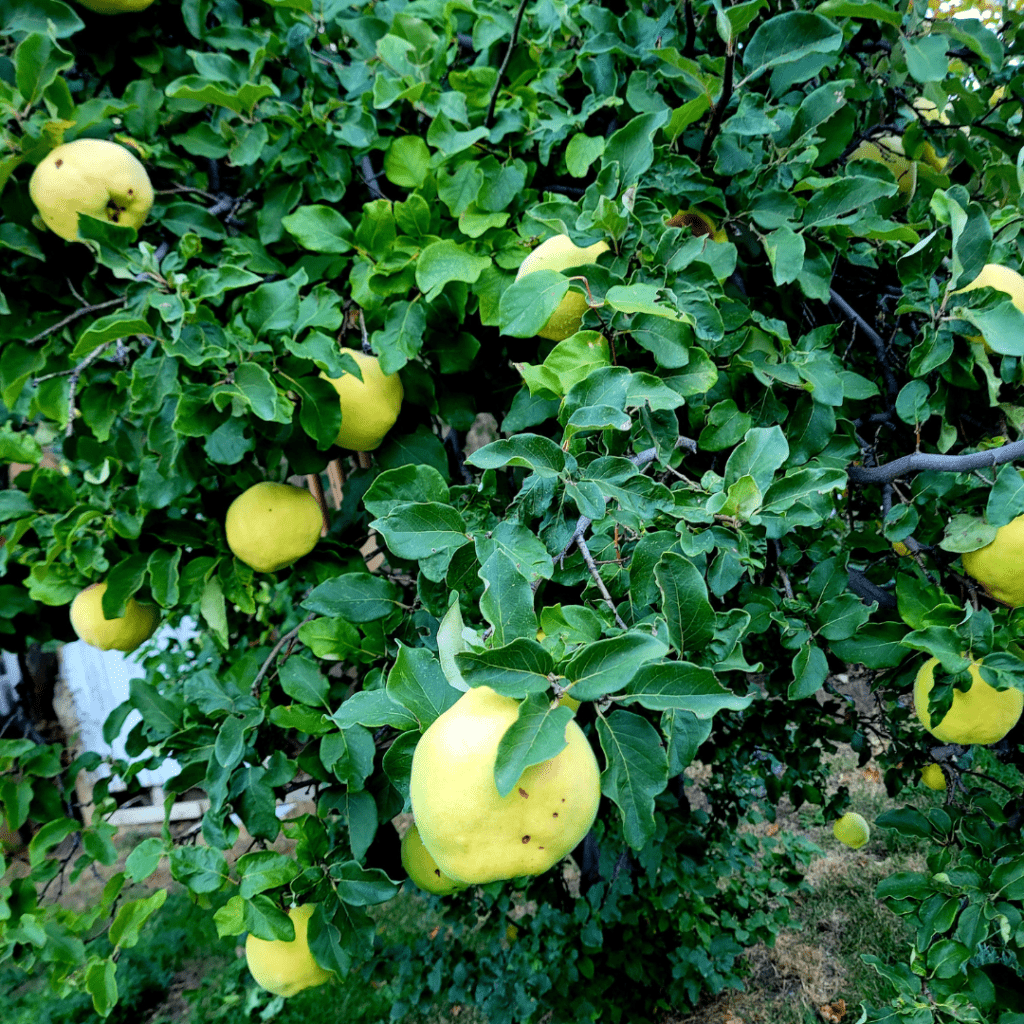Discover the benefits of micro-orcharding in your backyard and why it’s becoming the go-to solution for home gardeners who want fresh, organic fruit without the space or hassle of a full orchard. Micro-orchards maximize limited space by planting dwarf and semi-dwarf fruit trees, making it easy to grow a variety of fruits right outside your door. Perfect for sustainable living, micro-orcharding boosts your self-sufficiency, improves your garden’s biodiversity, and provides delicious, homegrown harvests year after year. Learn how to start your own micro-orchard today!
If you’ve ever dreamed of having your own little orchard but thought you didn’t have the space or time, micro-orcharding might just be the answer you’ve been waiting for. It’s all about growing a small, manageable collection of dwarf or semi-dwarf fruit trees right in your backyard—perfect for anyone wanting fresh, homegrown fruit without needing acres of land.
Out here off-grid, I’ve learned that making the most of every inch of garden space is key, and micro-orcharding fits right in with that mindset. Not only does it bring sweet, juicy fruit within arm’s reach, but it also helps build a resilient, sustainable food source that keeps giving year after year. In this post, I’ll share why micro-orcharding is such a game-changer and how you can start your own, no matter how small your space.
This is a pinnable post. Tap or hover over any image in this post to pin to your Pinterest Boards.
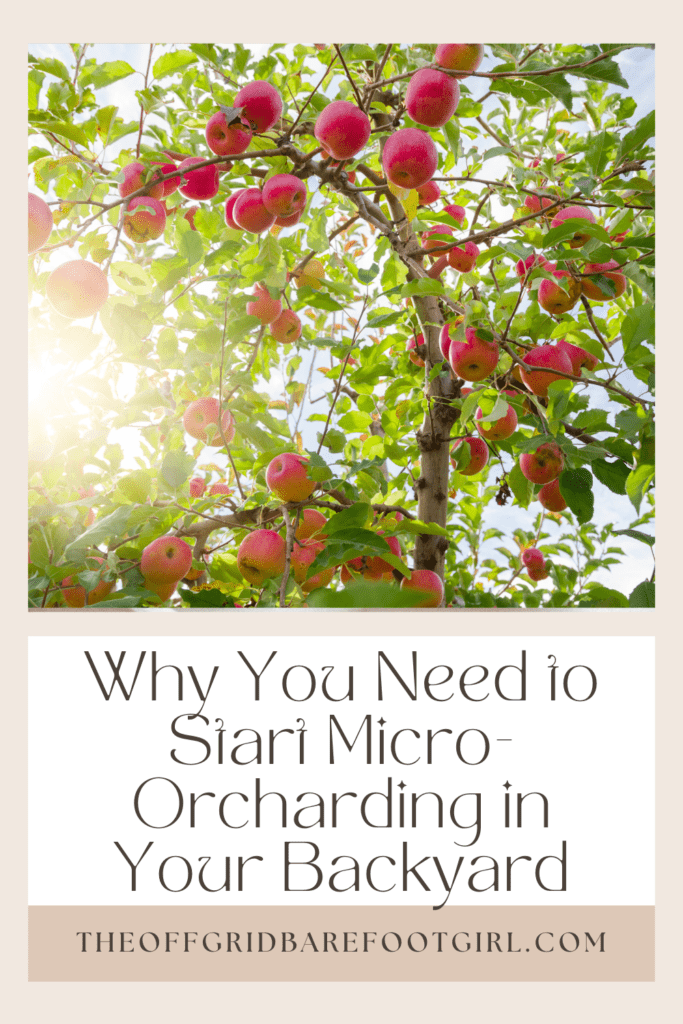
Introduction to Micro-Orcharding: Transforming Your Backyard into a Mini Orchard
Understanding the Concept of Micro-Orcharding
Have you ever dreamed of picking fresh, juicy apples or plump, sweet peaches from your very own backyard? Well, it’s time to turn that dream into a reality with the magic of micro-orcharding. Micro-orcharding is the art of transforming your backyard into a mini orchard, complete with a variety of fruit trees that will provide you with an abundance of delicious fruits right at your doorstep.
The Growing Popularity of Micro-Orcharding
You might be wondering, why is micro-orcharding becoming such a trend. Well, for starters, it allows you to take control of your food supply. With concerns about pesticides, GMOs, and carbon footprints, growing your own fruit is a sustainable and healthier alternative. Plus, there’s something incredibly satisfying about plucking a ripe piece of fruit directly from a tree you’ve nurtured.
Micro-orcharding can massively increase your home-grown food production while growing in smaller spaces. Micro-orchards are perfect for suburban and urban homes. This gardening concept allows homeowners to become orchard owners. While most people may not be able to grow and accommodate a full-sized orchard on acres of land, it is quite possible to still grow a vast variety of fruit trees, berry bushes, and herbs right in a suburban backyard. I know this because I am doing this myself!
What is a Micro-Orchard
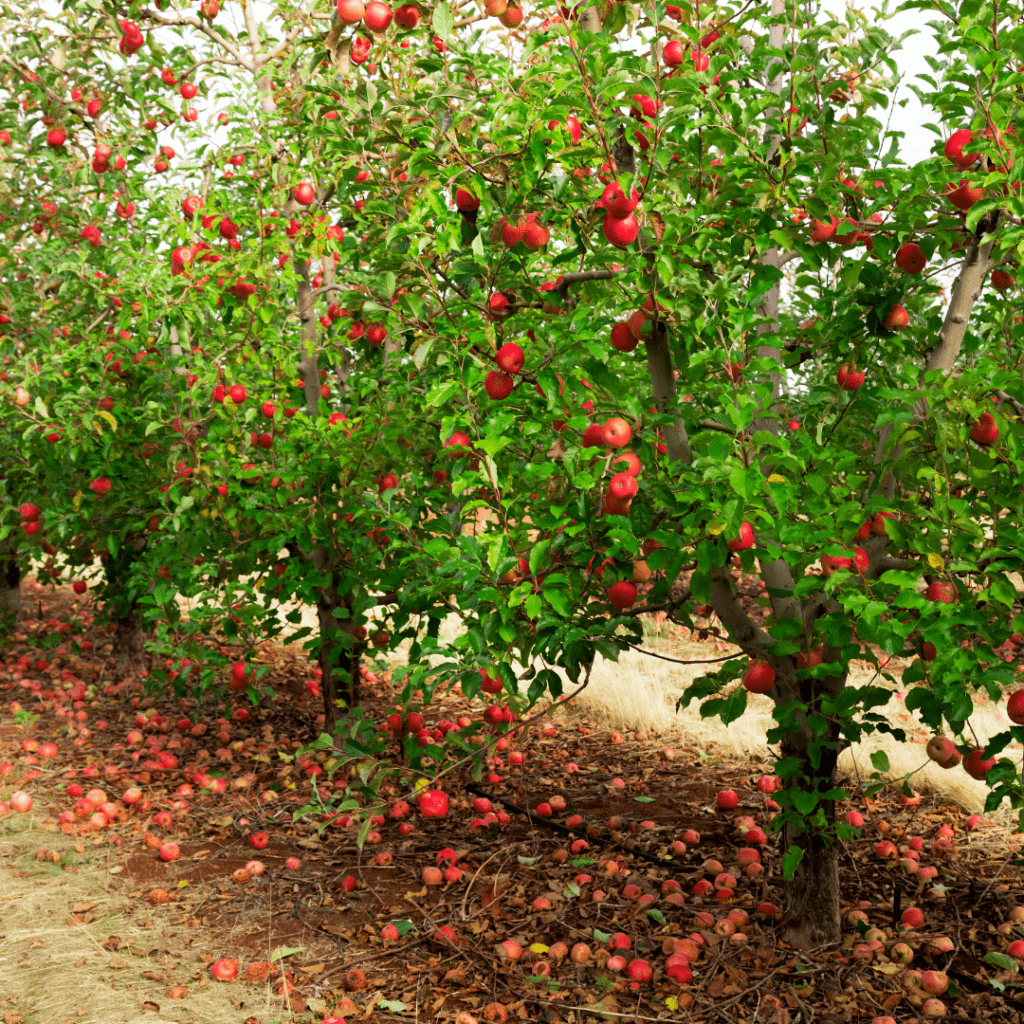
A micro-orchard is a mini orchard that is grown in a smaller space. It contains a variety of fruit trees, berry bushes, and herbs all within a food forest or guild. It is a gardening concept that allows the gardener to control the size of the fruit trees with regular hard pruning, which fruit trees love and benefit from for maximum yield and space-saving techniques.
A micro-orchard has a ton of berry bushes and herbs planted around and in between the fruit trees, making every plant edible. A micro-orchard is carefully planned out and designed to produce a massive variety of fruits and herbs. Micro-orchards are designed to allow sunlight and airflow to enter and circulate within the orchard and are grown to become a self-sufficient guild where each plant brings different benefits to the guild.
Micro-Orchards
- Consists of three to five different dwarf or semi-dwarf fruit trees.
- A dwelling place for a few berry bushes.
- A garden full of perennial herbs.
Why You Need to Start Micro-Orcharding in Your Backyard
When you start micro-orcharding in your backyard, you are becoming more self-sufficient. Orchards are meant to help you become self-sufficient in your food supply since they are abundant and produce many types of fruit every year. Micro-orchards are great for canning projects and stocking your pantry. Once a healthy micro-orchard is established, it will grow and last for decades!
There are dwarf and semi-dwarf fruit tree varieties that are the perfect size for most backyards. When regularly and properly pruned, you can fit many different types of smaller fruit trees in your backyard than you may think. When you take good care in the pruning process of these types of smaller trees, you increase their chances of providing a bountiful harvest.
Therefore, when you plant at least three to five dwarf or semi-dwarf fruit trees and a few berry bushes and perennial herbs, you will be reaping a bountiful harvest for decades to come! Imagine visiting your micro-orchard and harvesting the fruit you love from the trees, picking baskets full of your favorite berries, and taking clippings of delicious herbs for cooking your favorite meals. Fresh fruits, herbs, and berries can become pricy at the grocery store, so remember to plant your favorites!
Why You Should Be Micro-Orcharding
- Become more self-sufficient and save money. (Grocery shop in your backyard!)
- Abundant harvest for canning projects and stocking your pantry.
- Micro-orchards are abundant and have produced fruit and herbs for decades.
- Many varieties of local fruit trees to choose from for many types of fruits in your backyard.
The Benefits of Micro-Orcharding: A Sustainable Solution for Homegrown Fruit
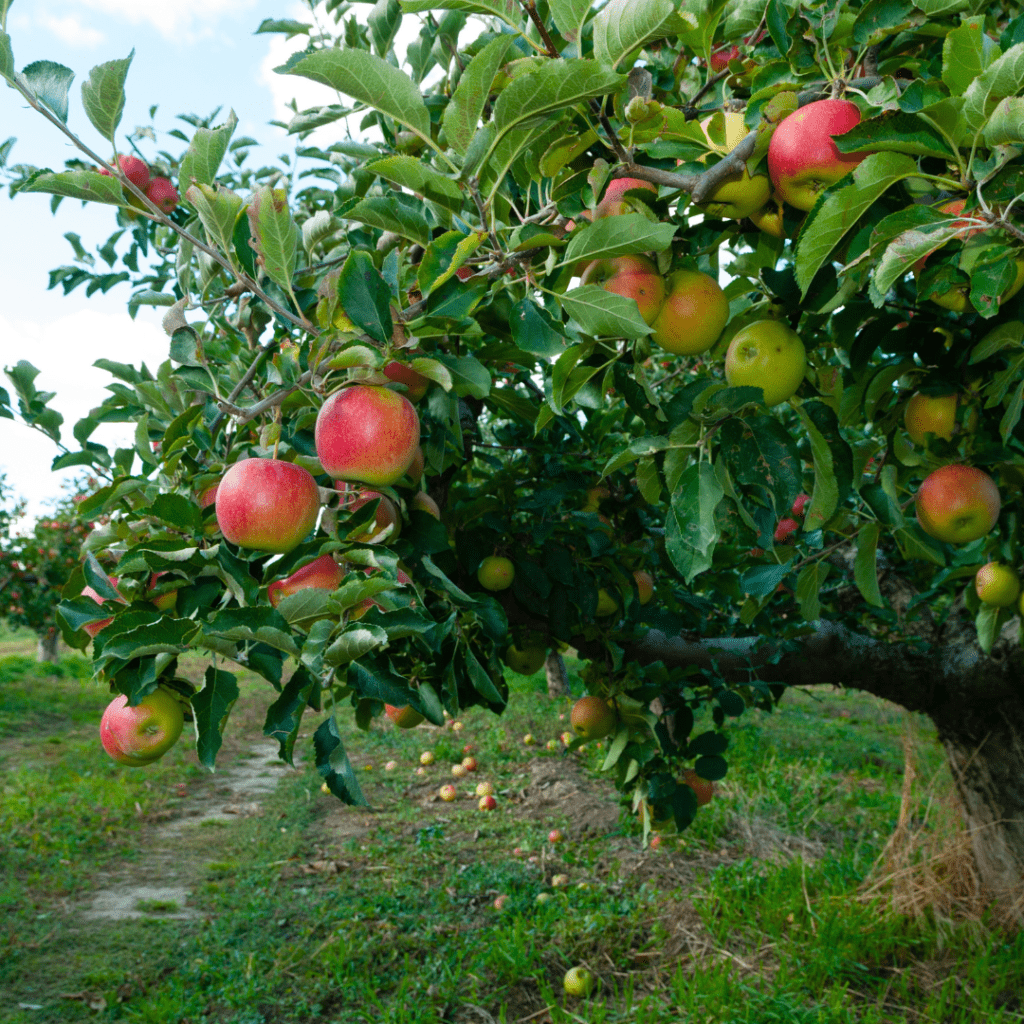
Environmental Benefits of Micro-Orcharding
By planting fruit trees in your backyard, you’re contributing to a greener planet. Trees absorb carbon dioxide, release oxygen, and act as natural air purifiers. They also help prevent soil erosion and provide habitats for various beneficial insects and birds.
Economic Benefits of Growing Your Own Fruit
Let’s face it, fruits can be expensive, especially if you’re aiming for organic options. By growing your own fruit, you’ll save money and reduce your grocery bills. Plus, you’ll be able to enjoy high-quality, fresh produce without the worry of it being imported from miles away.
Nutritional and Health Benefits of Homegrown Fruits
The nutritional benefits of homegrown fruits are hard to beat. They are rich in vitamins, minerals, and antioxidants that promote overall health and well-being. Plus, when you grow your own fruit, you have full control over the use of pesticides and fertilizers, ensuring that you and your family are consuming the healthiest options available.
How to Start Micro-Orcharding in Your Backyard
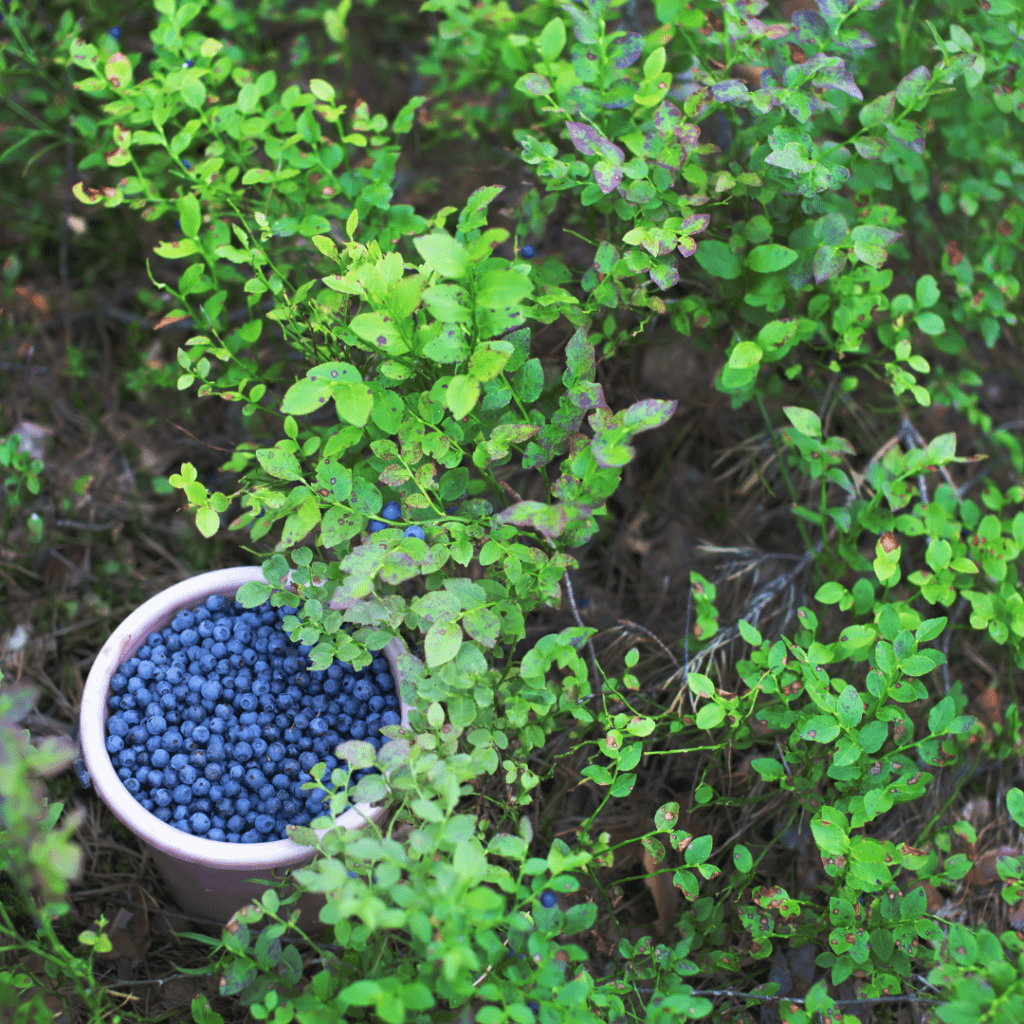
Choosing the Right Fruit Trees for Your Micro-Orchard: Understanding Varieties and Space Requirements
Remember to do your research when selecting the varieties of fruit trees and berry bushes for your area. It is best to only plant varieties that are local to your area for the best success at establishing your micro-orchard. For instance, if you really love peaches and want to plant a peach tree, look for a dwarf or semi-dwarf peach tree variety that grows locally in your area. A good place to learn more about your local plants is to visit your local plant nurseries.
Considering Climate and Growing Zones
Before embarking on your micro-orcharding journey, it’s important to consider your climate and growing zones. Not all fruit trees thrive in every region, so do some research to find out which varieties are best suited for your area’s temperature and rainfall patterns.
Determining the Space Available for Your Micro-Orchard
Whether you have a small backyard or just a balcony, there’s always room for a micro-orchard. Take stock of the available space and plan accordingly. Dwarf or semi-dwarf fruit tree varieties are excellent choices for limited spaces, as they take up less room while still producing a generous harvest.
Selecting Fruit Tree Varieties Based on Your Preferences and Needs
When it comes to selecting fruit tree varieties, the options can be overwhelming. Consider your taste preferences, as well as the maintenance level each variety requires. Do you crave the tartness of lemons or the sweetness of cherries? Choose the trees that will bring you joy and fit your gardening skills.
I have an established micro-orchard in my backyard with semi-dwarf fruit trees. I have just begun the process of adding berry bushes, strawberry patches, and perennial herbs to my micro-orchard. Also, I added some chives and garlic that are planted around the fruit trees to help eliminate some pesky issues with fruit flies and other orchard pests. I highly recommend planting a large amount of garlic and chives around all your fruit trees. Furthermore, even if you do not plan to harvest garlic from your orchard, planting garlic in the orchard will help keep it mostly pest-free to help you grow organically.
Subsequently, there will come a time when the garlic will become crowded, and you will be awarded some free garlic to cook with! It is a win-win for both the orchard and the kitchen!
- Plant dwarf or semi-dwarf fruit tree varieties that are local to your area. Learn more about the varieties in your area from your local plant nurseries.
- Plant berry bushes, strawberry patches, and perennial herbs.
- Plant garlic and chives around the fruit trees to help control pests.
Selecting the Site of Your Micro-Orchard
Most importantly, you will want to select an area in your backyard or side yard that has at least six to eight hours of sunlight daily. Begin to monitor different areas of your yard to determine the best area to start micro-orcharding. It is best to select a site that has little to no traffic and is not in the way of your daily life.
The location of my own micro-orchard is along the right side of my backyard along the fence wall. The semi-dwarf fruit trees are planted several feet from the fence wall and from each other. This is the perfect sunny location in my backyard and it is out of the way, only taking up one side of the yard. By the way, springtime is gorgeous when everything begins to bloom right in my backyard!
- Select an area that has at least six to eight hours of sunlight each day. Monitor your backyard for the best sunny spot!
- Make sure the selected area is not in the way of heavy traffic.
Preparing the Soil of Your Micro-Orchard
Make sure the soil in the site you selected is well-draining. You do not want your micro-orchard to be sitting in standing water or be unable to obtain water due to poor water run-off. To help you determine the quality of your soil and simple projects to help you improve the soil, I created another post with 4 Easy DIY Garden Soil Tests to Do Now to help you get started.
4 Easy DIY Garden Soil Tests to Do Now (Soil and Water Draing Tests)
- Make sure the soil for your micro-orchard is well-draining. Click on the following link for easy DIY soil tests and water draining tests that you can do yourself.
- Add organic compost seasonally to your micro-orchard.
DIY Soil Tests: 4 Easy DIY Garden Soil Tests to Do Now
Micro-Orcharding in Your Backyard: How to Plant Yours
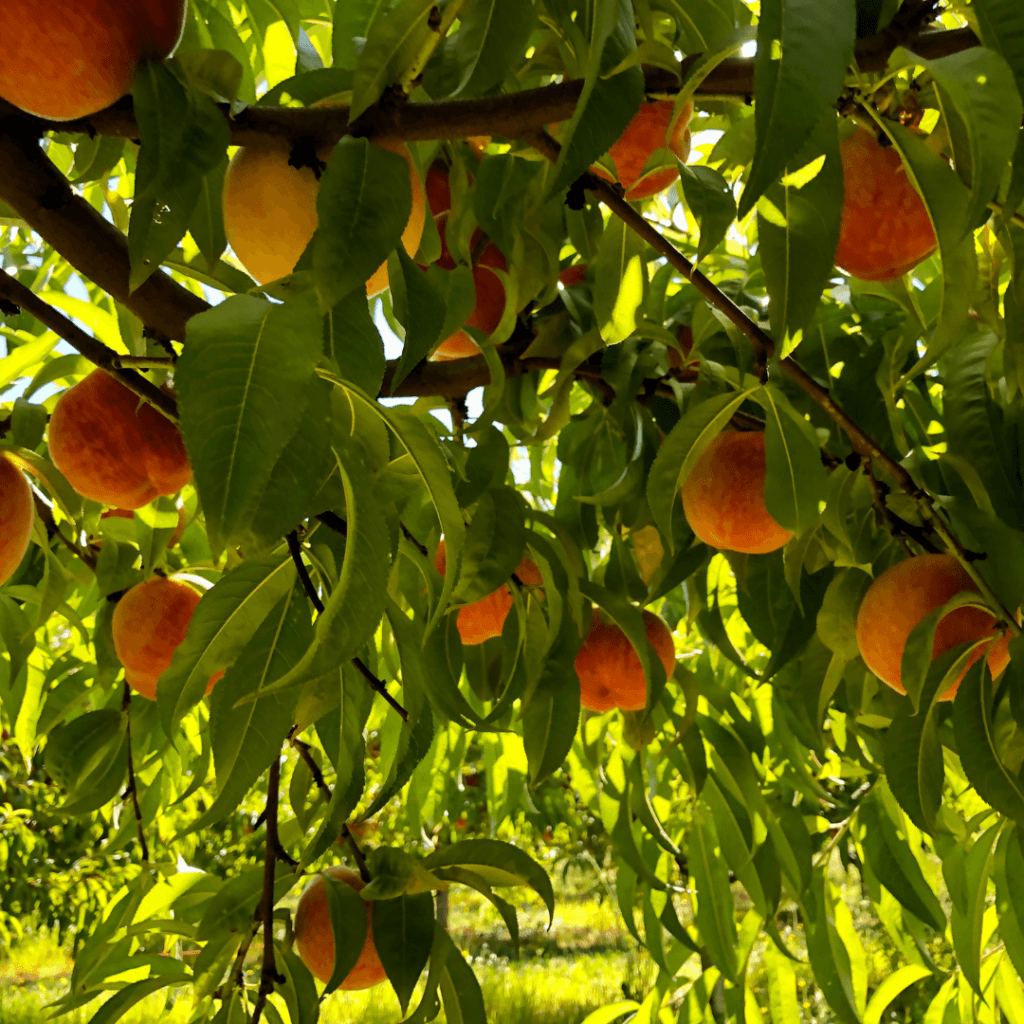
Once you have selected your dwarf or semi-dwarf fruit trees, berry bushes, and perennial herbs, and completed your soil and water drainage tests, it is time to begin planting your micro-orchard. Plant your small fruit trees according to the nursery instructions in a row on the site you have selected. Be sure to plant the fruit trees next to one another if they need to pollinate each other. Some semi-dwarf trees are self-pollinating and do not need another tree for pollination.
Plant some garlic around each fruit tree, as well as some chives around the micro-orchard in various areas. This allows for pest control to help you grow more organically, and this really does work! Garlic is an orchard’s best friend! Learn more about this orchard method in my post, Surprising Benefits of Growing Garlic Around Fruit Trees.
Finally, begin planting some berry bushes and perennial herbs around the micro-orchard in between the trees. Do not forget to plant the strawberry patch in between some trees as well.
Soon, your micro-orchard will be spreading out and growing beautifully each season, and you will be harvesting a bountiful harvest for years to come once everything is grown to maturity.
Setting Up Your Micro-Orchard: Planning, Planting, and Maintenance Tips
Preparing the Soil for Planting
The foundation of a successful micro-orchard lies in the soil. Make sure it’s well-drained, fertile, and rich in organic matter. You can enhance your soil by adding compost or organic fertilizers to provide the necessary nutrients for healthy tree growth.
Site Selection and Sunlight Requirements
Find a sunny spot for your fruit trees, as most varieties require at least 6 to 8 hours of direct sunlight daily. Avoid areas prone to strong winds or areas with poor drainage. Also, consider the proximity to structures or other trees that may shade your fruit trees.
Planting Techniques for Fruit Trees in a Micro-Orchard
When it’s time to plant your fruit trees, make sure to follow proper planting techniques. Dig a hole slightly larger than the tree’s root ball, place the tree at the same depth it was grown in the nursery, and backfill the hole with soil. Give the tree a good watering and mulch around the base to conserve moisture and prevent weed growth.
Watering and Fertilization Guidelines
Consistent watering is crucial during the establishment period of your fruit trees. Water deeply and regularly, especially during hot and dry spells. As for fertilization, it’s best to follow the guidelines specific to each fruit tree variety. Applying organic fertilizers in early spring and late fall will help nourish your trees and promote healthy growth.
Maximizing Yield and Harvest: Pruning, Thinning, and Pest Control Techniques
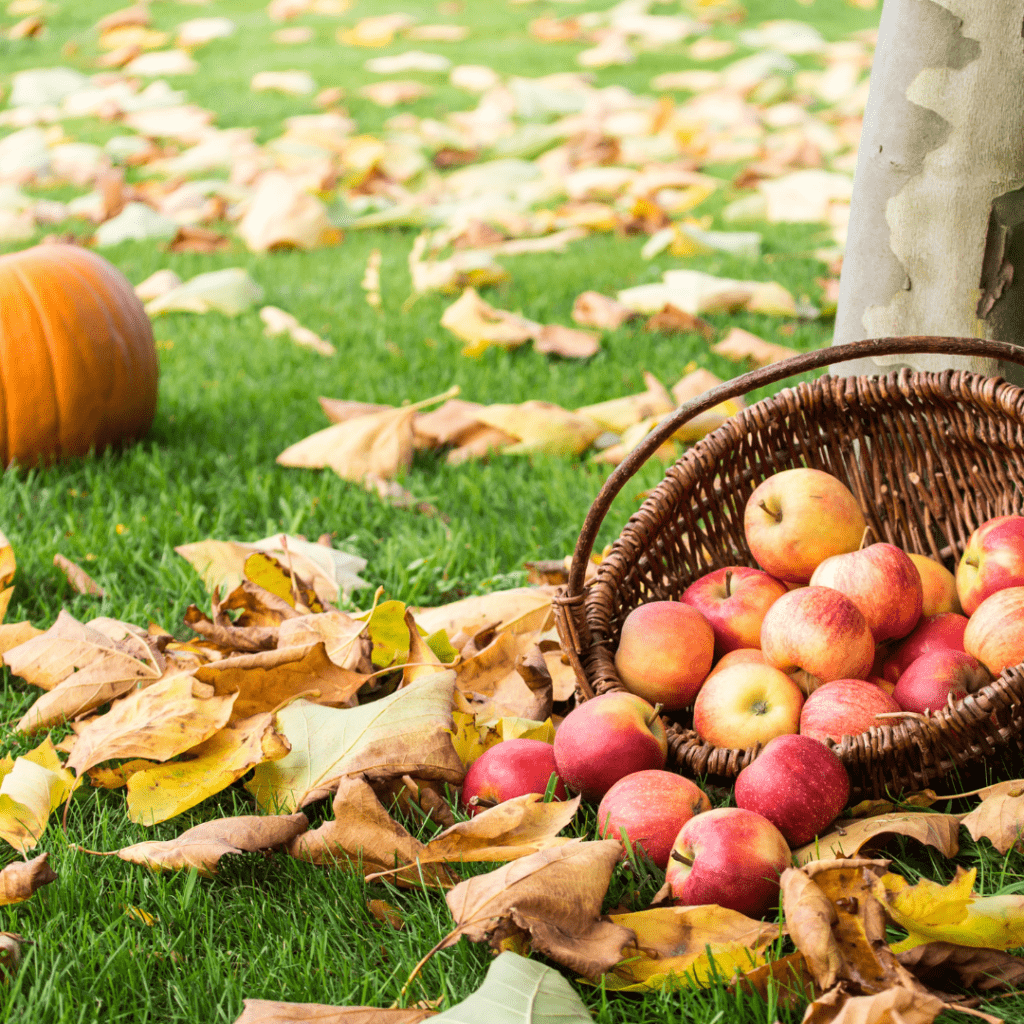
Understanding the Importance of Pruning in Micro-Orcharding
Pruning is like giving your fruit trees a stylish haircut, but with a purpose. It helps maximize their growth, productivity, and overall health. By removing dead or diseased branches, you create space for new shoots to thrive. Pruning also encourages better airflow and sunlight penetration, reducing the risk of pests and diseases. So grab those pruning shears and channel your inner hairstylist for your mini orchard!
Thinning Fruit for Optimal Growth and Quality
Picture this: a branch drooping under the weight of too many fruits, struggling to hold on. That’s why thinning is a must-do in micro-orcharding. By removing excess fruits, you give the remaining ones room to grow to their full potential. Thinning also prevents branches from snapping under the weight and ensures better overall fruit quality. So, be brave, be ruthless, and thin those fruits for the ultimate flavor explosion!
Identifying and Managing Common Pests and Diseases
Pests and diseases can be uninvited guests in your micro-orchard, but fear not! With a bit of vigilance and some pest control techniques, you can keep them at bay. Regularly inspect your trees for signs of trouble, like chewed leaves or suspicious spots. If you do spot unwanted visitors, deploy your arsenal of organic pest control methods. From companion planting to homemade sprays, there’s a solution for every pesky problem. Remember, prevention is better than fruitless panic!
Enjoying the Fruits of Your Labor: Harvesting, Preserving, and Using Homegrown Fruits
Knowing When to Harvest Different Fruit Varieties
Ah, the sweet anticipation of harvest time! But how do you know when to pluck those juicy treasures from your micro-orchard? Each fruit variety has its own telltale signs of ripeness. For apples, it’s when they’re easily twisted off the branch. Peaches should give in slightly to gentle pressure. And when it comes to berries, vibrant color and a gentle tug are your cues. Don’t rush it – let nature’s signals guide you to the perfect harvest moment!
Proper Storage and Preservation Methods for Homegrown Fruits
You’ve worked hard to grow those delectable fruits, so it’s vital to store them properly for maximum enjoyment. For short-term storage, keep them in a cool, dark place with good airflow. But if you want those flavors to last all year, try your hand at preserving them. From making jams and jellies to freezing and canning, there are endless ways to save the taste of summer. Embrace your inner culinary wizard and extend the fruit party!
Creative Ways to Use and Enjoy Your Homegrown Fruits
It’s time to savor the literal fruits of your labor. Homegrown fruits are not just for eating straight from the tree – they can be stars in delightful culinary creations! Blend them into smoothies, top your morning pancakes, or toss them into vibrant salads. How about a homemade fruit pie or a refreshing fruit-infused water? Let your creativity run wild, and your taste buds will thank you for the explosion of flavor and freshness!
Overcoming Challenges: Common Issues and Troubleshooting for Micro-Orcharding
Dealing with Climate and Weather Challenges
Mother Nature can be a fickle friend when it comes to micro-orcharding. From scorching summers to unexpected frost, weather challenges are real. But fear not! By choosing fruit varieties suited to your climate, using protective covers, and providing extra care during extreme conditions, you can conquer these challenges like a seasoned micro-orchard warrior. Remember, you have resilience on your side!
Addressing Soil Issues and Nutrient Deficiencies
Healthy soil equals happy trees. But what if your soil is not quite up to par? Fear not, fellow micro-orchard enthusiast! Nutrient deficiencies and soil issues can be tackled. Conduct a soil test to identify any deficiencies, then amend it accordingly. Organic fertilizers, compost, and mulching can all be your secret weapons for promoting strong and fruitful growth. Give your trees the nourishment they crave, and they’ll reward you with bountiful crops. It’s a win-win underground party!
By embracing micro-orcharding, you can create a beautiful and fruitful oasis right in your own backyard. Not only will you experience the satisfaction of growing your own fruit, but you’ll also reap the environmental, economic, and health benefits that come with it. So why wait? Start planning and planting your micro-orchard today, and enjoy the abundant harvests and flavors that only homegrown fruits can offer. Get ready to savor the sweet success of micro-orcharding and inspire others to join in this sustainable gardening practice.
What I Have Growing in My Micro-Orchard
I have three mature semi-dwarf fruit trees that were already here when I moved onto this new property when purchased. Since then, I have planted three phenomenal lavender plants, which are perfect for my climate since we have extreme temperatures from freezing winters to hot and dry summers. These lavender plants are planted in a single row between two of my fruit trees and are growing nicely to full size already.
To learn more about my semi-dwarf fruit trees in my micro-orchard, you can visit my other posts I have written all about each of them and how I am growing and caring for them. I have a delicious quince tree and I can the whole tree to get some yummy fall-flavored quince jam for a year’s worth of supply.
My Semi-Dwarf Fruit Trees in My Micro-Orchard
Quince Trees: All About Quince Trees: Ultimate Guide
Cherry Trees: All About Cherry Trees: Ultimate Guide
Pear Trees: All About Pear Trees: Ultimate Guide
Next, I have some perennial herbs that are beginning to grow and spread. I am excited about the chamomile patch for some nice relaxing tea! My strawberry patch is growing nicely and beginning to shoot out new runners for expansion. You can learn more about my strawberry patch by visiting How to Grow a Productive Perennial Strawberry Patch.
Spearmint is also planted in my micro-orchard, and it is delicious and smells divine! I have more perennial plants that will be going into my micro-orchard, which include berry bushes and more herbs.
Want More Fruit from Your Trees? Let Me Show You How

Companion planting is just the beginning. If you’re ready to build a thriving backyard orchard that feeds your family and nourishes your soil, you’ll love my book Harvesting Paradise: Your Guide to Growing a Backyard Orchard. Inside, I share everything I’ve learned—step by barefoot step—about planting, pruning, and creating an off-grid oasis filled with apples, pears, cherries, and more. Grab your copy and start turning your land into a self-sufficient fruit haven today!
Get your copy!
Harvesting Paradise: Your Guide To Growing a Backyard Orchard
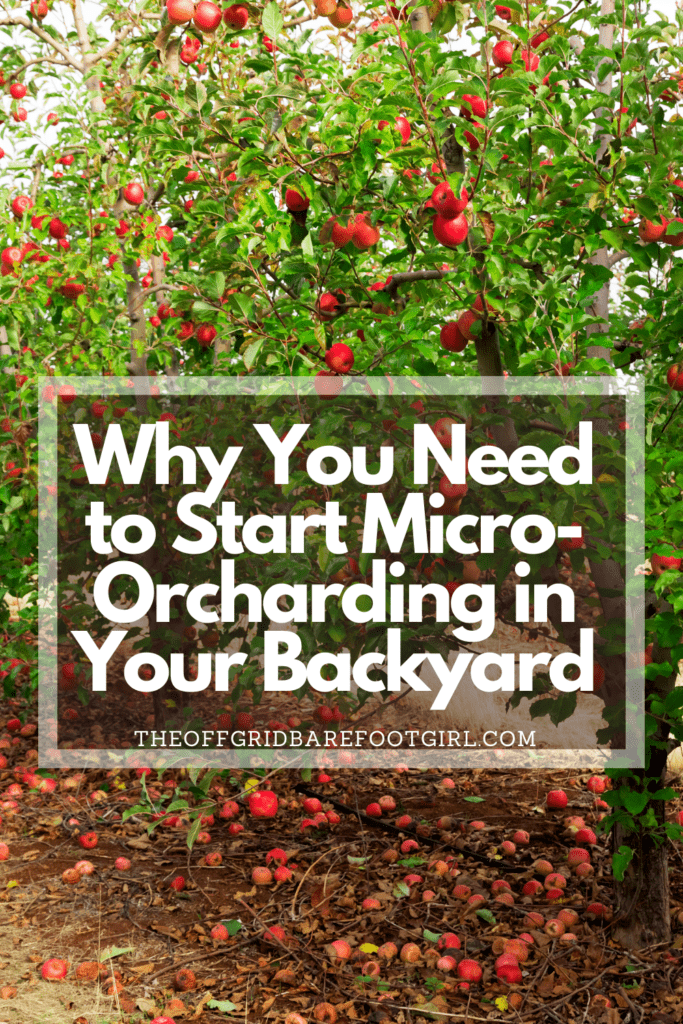
Frequently Asked Questions
1. Can I start micro-orcharding if I have limited space in my backyard?
Absolutely! Micro-orcharding is designed specifically for small spaces. Even if you have a tiny yard or just a balcony, you can still enjoy the benefits of growing your own fruit. There are compact fruit tree varieties and even techniques like espalier that can help maximize space.
2. Do I need any prior gardening experience to start micro-orcharding?
No prior gardening experience is necessary to start micro-orcharding. While some basic knowledge of gardening can be helpful, there are plenty of resources available to guide you through the process. With a little research and the right tools, anyone can create a thriving micro-orchard.
3. Is micro-orcharding a time-consuming activity?
Micro-orcharding does require some initial planning and setup, but it can be as time-consuming or as low-maintenance as you want it to be. Once your micro-orchard is established, regular maintenance tasks like pruning, watering, and pest control can be easily integrated into your gardening routine. The time you invest will be rewarded with bountiful harvests.
4. Can I grow a variety of fruit trees in a micro-orchard?
Absolutely! One of the joys of micro-orcharding is the ability to grow a diverse range of fruit trees. From apples and pears to peaches, plums, and citrus fruits, there are numerous varieties suitable for micro-orchards. Just ensure you select fruit trees that are well-suited for your climate and space limitations.
Summary
I hope I have inspired you to start micro-orcharding in your own backyard. I love micro-orcharding and since you are here, I know you will love it too!
If you were encouraged by this post, I invite you to check out my FREE Printables Page for fun free printables, planners, and charts.
ENTER MY FREE Printables Page HERE
I invite you to check out some more of my posts!
Strawberries: How to Grow a Productive Perennial Strawberry Patch
Raspberries: How to Grow a Productive Perennial Raspberry Patch
Quince Trees: All About Quince Trees: Ultimate Guide
Cherry Trees: All About Cherry Trees: Ultimate Guide
Pear Trees: All About Pear Trees: Ultimate Guide
Vegetables: Square Foot Garden: The Easy Way to Plan Yours.
Blessings,
The Off Grid Barefoot Girl

